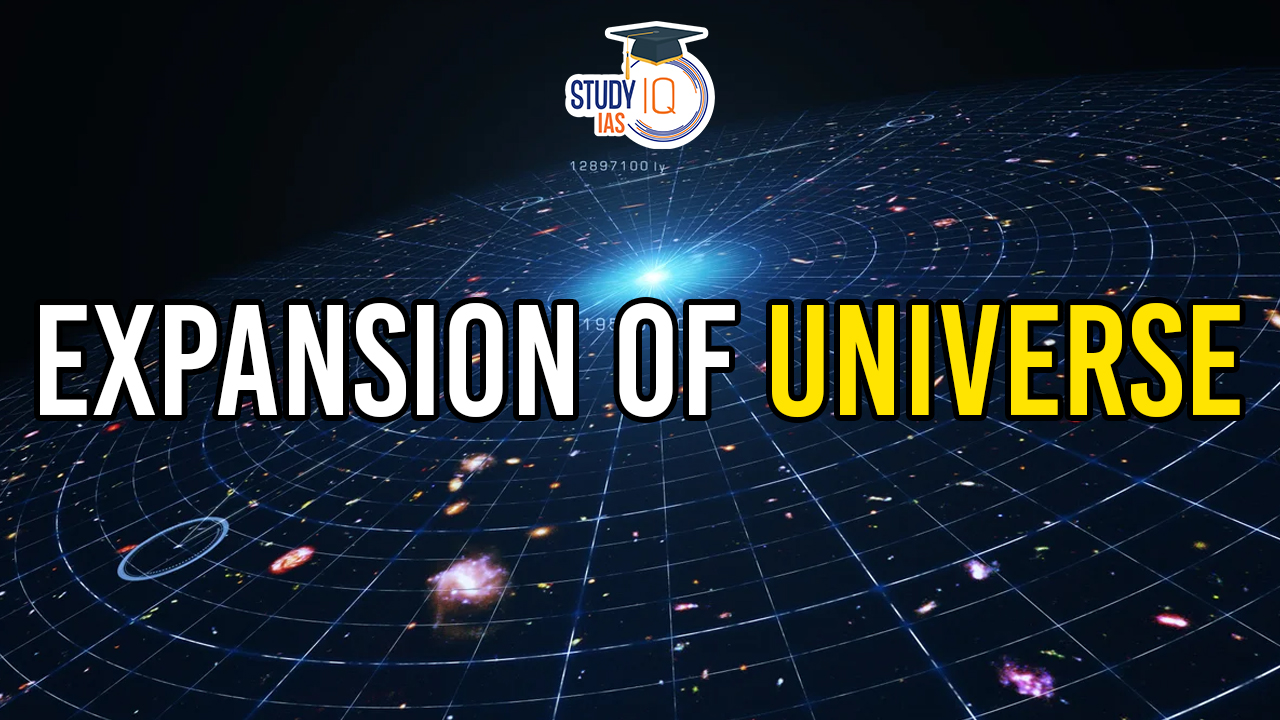Table of Contents
Context
- A recent study confirmed that two equally valid methods for measuring the universe’s expansion rate yield different values, creating the “Hubble tension.”
- Two methods to measure expansion: Cosmic microwave background (CMB) and The cosmic distance ladder, specifically observations of Cepheid variable stars.
|
Important Terms |
|
Cosmic Expansion and Curvature
- The universe’s expansion began after the Big Bang (~14 billion years ago).
- Expansion’s fate determines the universe’s curvature:
- Open universe (infinite, forever expanding).
- Closed universe (finite, will eventually collapse due to gravity).
- Flat universe (expands forever, but expansion rate slows over time).
- CMB radiation suggests a flat universe (nearly zero curvature).
Measuring Expansion Rate of Universe
- Cosmic Microwave Background (CMB):
- The afterglow of the Big Bang.
- It is a faint cosmic background radiation filling all space.
- The CMB is not visible to the naked eye and permeates the universe.
- Due to its very low temperature, only 2.725 degrees above absolute zero, it primarily emits radiation in the microwave spectrum.
- The CMB is a critical tool for scientists studying the early universe’s structure and formation.
- Provides an estimate of the universe’s expansion at 68 km/s/Mpc.
- Cosmic Distance Ladder:
- Set of techniques to measure distances to celestial objects.
- Cepheid variable stars: Brightness variations reveal distance.
- The expansion rate was estimated at 73 km/s/Mpc using Cepheid variables.
Ruling Out Measurement Errors
- James Webb Space Telescope’s (JWST) advanced capabilities in near-infrared radiation allow for clearer observation of Cepheid variables.
- The study in The Astrophysical Journal Letters analysed over a thousand JWST observations to check for potential errors in Hubble’s data.
- No significant difference was found between Hubble and JWST estimates, ruling out local crowding and filter choice as causes for the Hubble tension.
Causes of Expansion of Universe
The universe’s expansion is attributed to dark energy, a mysterious force that propels space outward. Dark energy is thought to have taken over as the dominant energy component of the universe roughly 3 billion years ago, around 11 billion years after the Big Bang. Unlike other forces, dark energy’s energy density remains constant as space expands, defying dilution.
Described as possessing negative pressure, dark energy engages in a cosmic tug-of-war with gravity since the universe’s inception. While gravity pulls galaxies closer together, dark energy exerts a repulsive force, pushing them apart. The fate of the universe—whether it expands indefinitely or contracts—hinges on which force prevails.
If physicists’ fundamental understanding holds true, the universe will continue to expand at an accelerated rate. This scenario entails matter dispersing, stars eventually ceasing to exist, new stars unable to form, and space gradually growing darker and colder.
The trajectory of the universe’s expansion or contraction is influenced by its content and past evolution. The sufficient matter could potentially slow or reverse the expansion, leading to a contraction phase.
Impact of Expansion of Universe
| Implications | |
|---|---|
| Galaxy Dynamics | Galaxies are carried apart as space expands, leading to increased distances between them. |
| Redshift of Light | Wavelengths of light stretch due to cosmic expansion, resulting in cosmological redshift. |
| Future of Stars and Galaxies | Star formation becomes increasingly difficult as galaxies drift apart, leading to eventual depletion of star-forming gas. |
| Dark Energy Dominance | Accelerated expansion may lead to scenarios like the “Big Freeze” or the “Big Rip.” |
| Cosmic Microwave Background | Expansion’s imprint on the CMB provides insights into cosmic history and dynamics. |
| Cosmological Models | Understanding expansion helps refine models, informing our understanding of the universe’s composition and evolution. |


 India’s Deep Sea Technology, Need and ...
India’s Deep Sea Technology, Need and ...
 Nag Anti-Tank Missile System (NAMIS)
Nag Anti-Tank Missile System (NAMIS)
 ESA’s Gaia Mission, Scientific Instrum...
ESA’s Gaia Mission, Scientific Instrum...





















